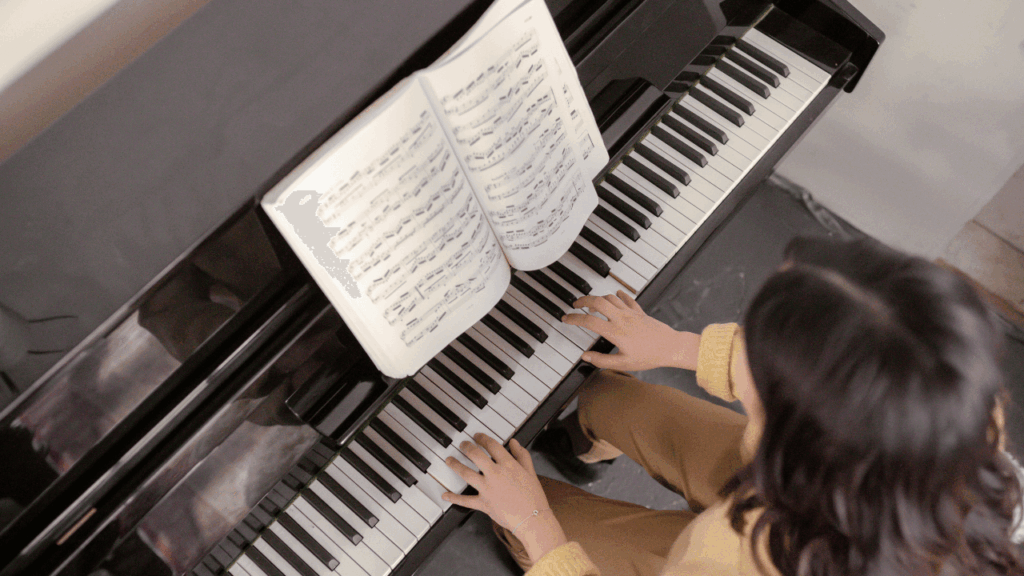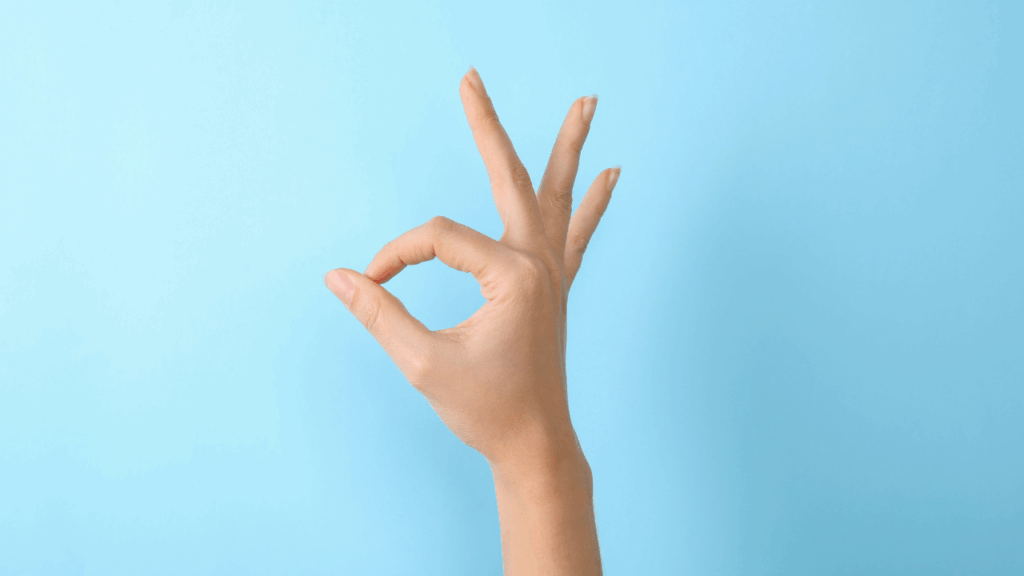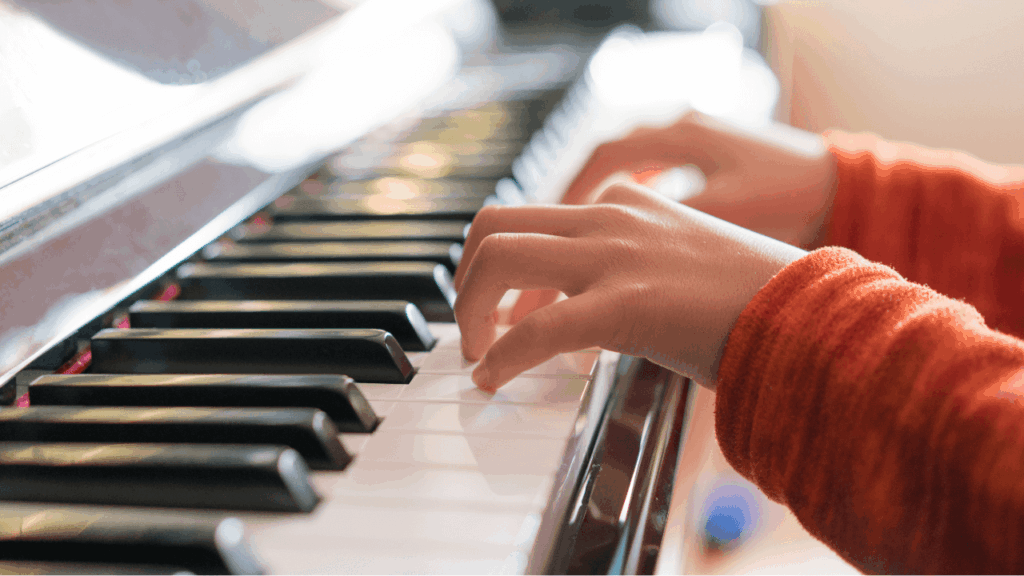A piano has 88 keys, but each hand has only five fingers. That’s why finger numbers (1–5) and fingering matter so much.
Understanding correct fingering brings many benefits, such as easier playing and better expressiveness.
This time, we’ll explain how to move your piano fingers in ways you can use starting today.
- Finger-Number Basics: 1–5 = Thumb to Pinky
- Basics of “Thumb-Under / Thumb-Over” — Play Do Re Mi Fa So La Ti Do Smoothly
- Why Are “Finger Numbers & Fingering” the Shortcut to Improvement?
- What Happens If You Ignore Finger Numbers
- How to Decide the Right Fingering
- When You Don’t Know Which Fingers to Use
- When It’s Okay to “Ignore” Finger Numbers
- “Fingering Training” to Improve Your Piano Playing
- Frequently Asked Questions
- Understand Finger Numbers and Level Up Your Piano!
Finger-Number Basics: 1–5 = Thumb to Pinky

Finger numbers go from 1 to 5 starting with the thumb. The same numbering applies to both hands.
A standard beginner setup is to place both thumbs (1) near middle C.
Use the video and score above as references while you learn and practice the basic finger numbers.
Basics of “Thumb-Under / Thumb-Over” — Play Do Re Mi Fa So La Ti Do Smoothly
Right hand ascending
“Do 1” → “Re 2” → “Mi 3” → thumb-under → “Fa 1” → “So 2” → “La 3” → “Ti 4” → “Do 5” ↓
Right hand descending
“Do 1” ← “Re 2” ← “Mi 3” ← thumb-over ← “Fa 1” ← “So 2” ← “La 3” ← “Ti 4” ← “Do 5”
Left hand ascending
The left hand starts with pinky 5 and tucks the thumb under at Mi. It mirrors the right hand.
“Do 5” → “Re 4” → “Mi 3” → “Fa 2” → “So 1” → thumb-over → “La 3” → “Ti 2” → “Do 1” ↓
Left hand descending
“Do 5” ← “Re 4” ← “Mi 3” “Fa 2” ← “So 1” ← thumb-under ← “La 3” ← “Ti 2” ← “Do 1”
Why Are “Finger Numbers & Fingering” the Shortcut to Improvement?

Beginner scores and method books sometimes include finger numbers. If you ignore them, you may find you “run out of fingers,” “can’t play smoothly,” or your sound cuts off—making good performance difficult.
If you keep going your own way without knowing how to move your fingers, you’ll eventually hit a wall. Especially at first, practice according to the finger numbers and let your body learn proper motions.

What Happens If You Ignore Finger Numbers

Harder to play: With unsuitable finger numbers, you may twist your wrist to force a passage or get stuck and be unable to move to the next note.
Limits on expression: If you can’t do thumb-under/over smoothly, notes get choppy and musical expression suffers.
How to Decide the Right Fingering

- Observe the pattern: Identify jumps, scales, arpeggios, etc.
- Minimize motion: Reduce wrist travel; look for fingering that lets you stay in place longer.
- Thumbs mainly on white keys: Use longer fingers for black keys (with exceptions).
- Avoid repeated notes with the same finger: Switch fingers for consecutive neighboring notes.
- Check by phrase: Don’t judge bar by bar—play through surrounding phrases for smoothness, and write fingerings into the score as needed.
When You Don’t Know Which Fingers to Use

- Refer to etudes
Standard exercises like Hanon and Czerny include “set fingerings.” When unsure, search for similar patterns. - Use professional editions as models
Commercial scores and your teacher’s fingerings are also instructive. - Deliberately try alternatives
Finger numbers vary by player, so testing alternatives is fine.
When It’s Okay to “Ignore” Finger Numbers

If your hands are extremely small or large, you may not be able to play as written; in that case, you’ll need to reassign finger numbers appropriately.
People also differ in which fingers feel easy to move and in fingering preferences, so experiment to find what suits you.
However, always check whether it’s smooth across the whole phrase and free of strain on your fingers and body.
“Fingering Training” to Improve Your Piano Playing

- Stretching: Within a comfortable range, gently bend each finger back and widen the spaces to relax.
- Hanon: Builds finger independence.
- Scales & arpeggios: Start slowly and raise the tempo step by step. Aim for even tone between notes.
Frequently Asked Questions
-1024x684.png)
Q1 Do I have to follow the finger numbers exactly?
A Not necessarily. The basic principle is “what’s most logical,” so you can adjust for your hand size and the piece.
However, for beginners, first training your body with the printed fingering is the fastest way to improve.
Q2 Shouldn’t I play black keys with my thumb?
A There’s no absolute rule against it; sometimes you do use the thumb on black keys.
But because the thumb tends to reach in too far and block other fingers, it’s good to know the general rule: use fingers other than the thumb for black keys.
Q3 How do I read scores without finger numbers?
A Recall and try fingerings for similar patterns.
If it still feels awkward, watch technique videos to observe the hands, ask a piano teacher, or test options yourself.
Understand Finger Numbers and Level Up Your Piano!
- Ignoring finger numbers will slow you down—beginners should especially train them into the body.
- Keys to choosing well: minimize movement, avoid repeating the same finger, and make thumb-under/over smooth.
- Start by playing Do Re Mi Fa So La Ti Do smoothly.
At first you may only manage to follow the numbers, but the more you continue, the more your fingers will “remember” the keyboard on their own.
Use the methods introduced here to develop fingering that fits you and enjoy free musical expression on the piano!

